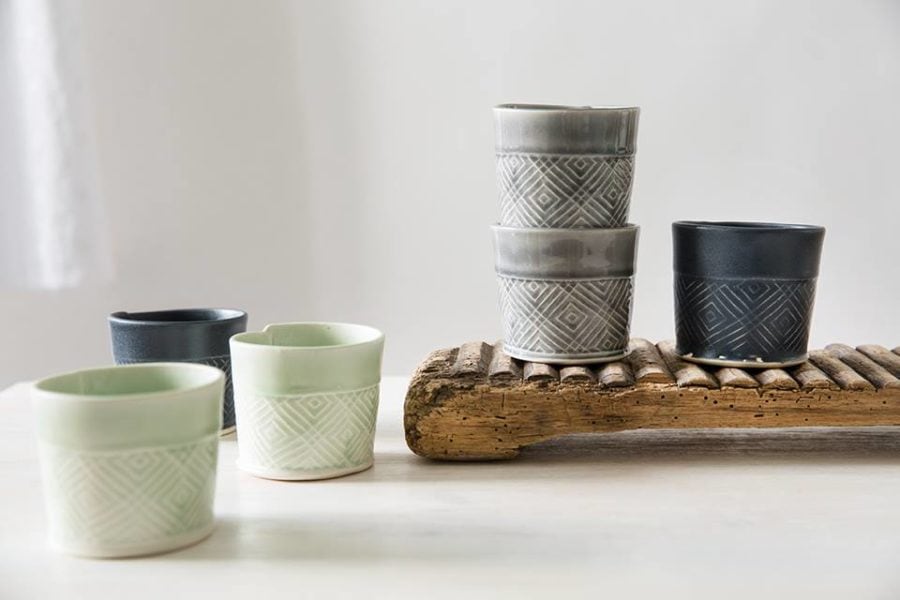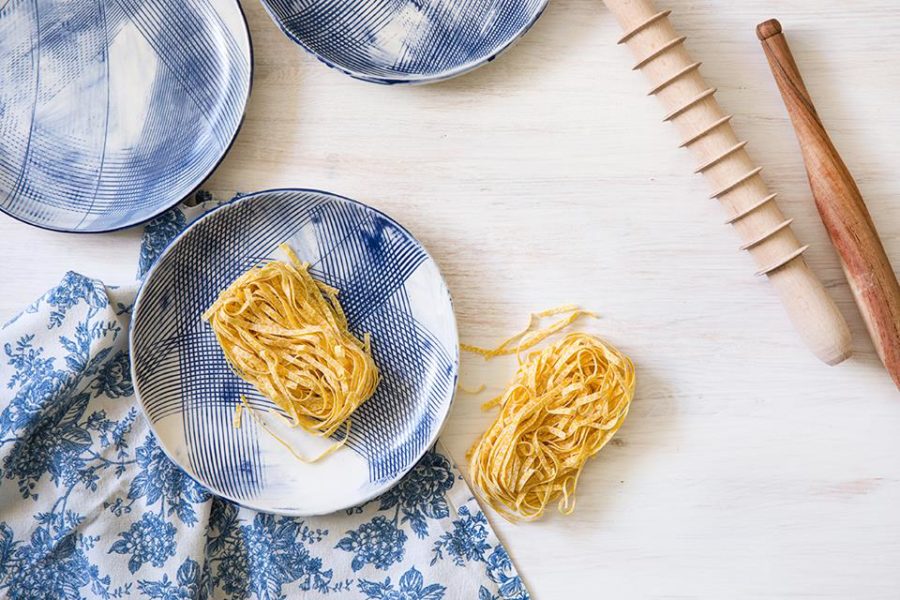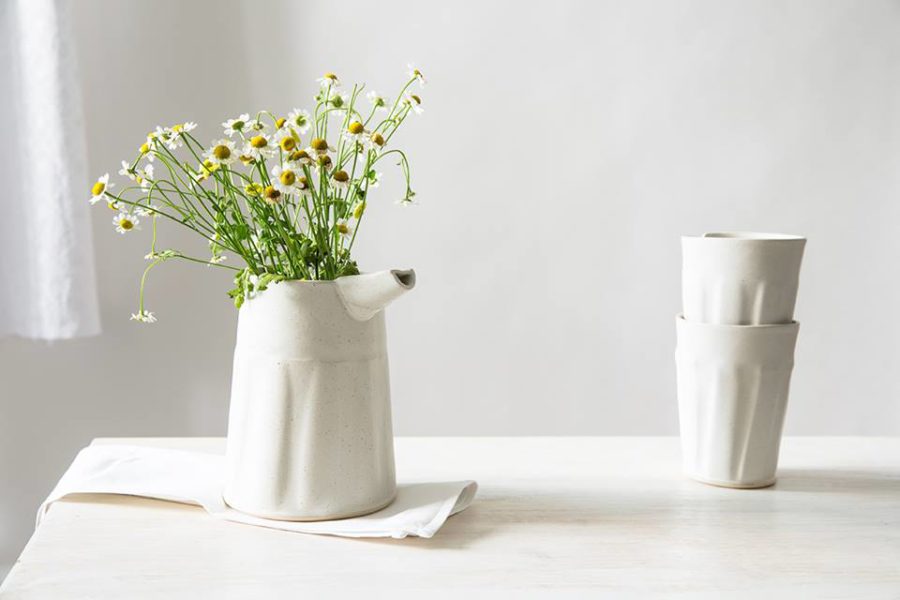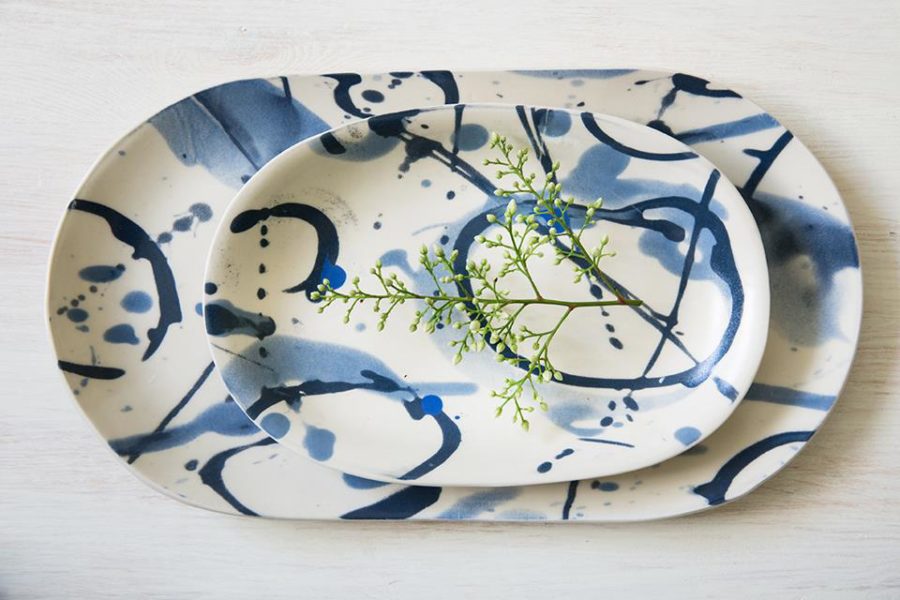Creative Minds is all about discovering and interviewing artists, designers and makers from all over the world and we are more than proud today to introduce you to Michal from Israel, who works with clay and the amazing free folding technique to create houseware handmade with soul, love and care. In her interview for our Blog, she speaks about her shop, Free Folding Studio, her life as an artisan and mother, shares with us her life story, experiences and her love of clay and the art of ceramics.
- Let’s start with a bit about yourself, what brought you into the world of ceramics?
Actually, like the old cliche, I think it was motherhood that softened me up and brought me into a search of something else in my life. While I was still a student at the jewelry design department in “Bezalel” academy in Jerusalem, we could make an exchange between departments. I remember going down to the ceramics floor, trying to sit in front of the wheel and feeling my body screaming. The feeling of clay was then unbearable to me. Only after I gave birth to my youngest girl, there was this tiny yodle buzzing in my mind and soul, that was leading me to start taking ceramic courses. The crash was immediate. After two years of weekly courses, I built a room of my own, my lovely studio, just below my house.
- You are a wife, a mother of 3 and dog owner, is finding the balance between work and personal life easy for you?
At the beginning, it was very difficult for me to find the balance between the ups and downs. I wanted to live at the studio 24×7 and just explore and create with clay. The fact that I had to do the laundry, wash dishes, cook and not to mention, feeding the dog, was totally unacceptable to me. But reality forced me to draw the line. It is very comfortable to live above your studio, especially because clay can be a very demanding material. It took some time for me to arrange my days like I do, so I have a timetable for both business and pleasure. In defined limits, I can fly.

- You have worked as a designer of theatre accessories in the past, from designing for the stage to creating objects for people’s homes, how was this process for you?
I find that for me it is almost the same. At the base of all things, I seek function and beauty. On stage, the object was there to serve a tale, an idea or a stage reality of sorts. Here, with clay, I get much more intimate. I make objects that are functional, that serve people in their environment, not only by using them but also for bringing beauty into their daily life. Holding, embracing, observing. This is very sensual for me, very present.
- Tell us more about the art of free folding, what is the process of making this beautiful objects?
It all starts from a clay sheet. I have a big slab roller, which is actually like a big pasta machine. I roll the clay into slabs of about 1/2”. Then I start throwing them on a wood table towards different directions. This action of opening and thinning the surface slowly, like the pizza dough when thrown into the air, is so much fun and I feel that it allows the surface to be free and to maintain this quality in the final result.
I start working on a sheet when it’s about ¼”, this is the time I start designing the piece. I make each of the pots by hand. I have no molds. I design and create the shape I want for the vessel and then I add the texture. I’m drawn to texture, I constantly observe my immediate environment looking for them.
I seek graphic elements, and I like playing around with different patterns – repetition, rhythm, order and composition. After, I “print” the texture into the clay, I let it dry until it is strong enough to stand on its own, but still soft and flexible to fold. I investigate its folding options, I close it and create a container. New ways to unravel traditional forms and to play with them are the force that attracts and motivates me to move forward.

- You use various techniques to create gorgeous effects on your ceramics, can you share some of them with us?
My eyes are always drawn to texture. I’ll take inspiration from everywhere I go: on the road, out in nature, my home kitchen and the studio. These textures will be imprinted into clay as images or stamps. I also use freehand drawing patterns using a special technics I developed. Mostly, I connect the readymade patterns with ones I create myself, by painting with a dull knife on a thin craft foam sheet. I like to see myself as a texture hunter, finding the right texture for me, in every possible place and space…

- Clay pottery is one of the most ancient techniques of houseware making in the world. What is your connection with the past and what makes your objects contemporary?
I remember growing up in a house by the sea. This beautiful small place was an archaeological hill, once a very old city and harbor. In my endless walks on the beach, I used to find ancient pieces of pots between the shells and the coastal plants. The power of this old material evidence was enchanting. I wanted to become an archaeologist and to work as a pottery restorator, like this woman I had seen working with so much care and patience in our Archaeological Museum.
So I found myself, many years later eventually making pots, not restoring them. In what way are my pots contemporary? I believe through the fact that they are not made by the traditional way of the wheel, pinching or coils, that in a way use a round movement to create the shape. Folding the clay slabs allows me to close up the volume of the vessel in various ways. Also, the effect of modern objects and designs, like in architecture and industry are inspiring me very much.
The connection to these ancient techniques of houseware-making that I can find in my work is that I actually create “slow pottery” in a world that moves in crazy rhythms. Clay is a material that has its own slow metabolism. Preparing the clay, building the pot, drying, firing, glazing, firing again… You can’t rush it. I still have to work in the same old rhythm. To close this circle, I must say that I am always drawn to the functional, but at the same time, I see the material, as it touches the evergreen. I am fascinated by this connection.

- Where can we shop your beautiful houseware?
I have a web shop on Etsy. My own web site is on the way… https://www.etsy.com/shop/FreeFolding
Follow us on Instagram as well!








